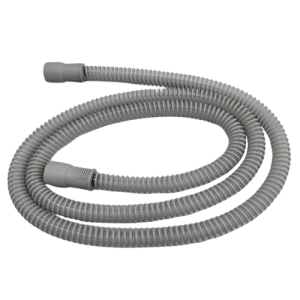Continuous Positive Airway Pressure (CPAP) therapy is a common treatment for sleep apnea, a condition characterized by pauses in breathing or periods of shallow breathing during sleep. One of the components of a CPAP machine is the tubing that connects the machine to the mask, delivering the pressurized air necessary to keep the airway open. A common question among CPAP users is whether it is safe and effective to use the machine if the tubing is still wet after cleaning.
Safety Considerations
Health and Safety
Using a CPAP machine with wet tubing is generally considered safe from a health perspective. There are no significant health risks associated with using a CPAP machine with some water droplets inside the tubing. The main concern is that the moisture might lead to discomfort or a less effective therapy session. Water in the tubing can sometimes result in “rainout,” where the water condenses and reaches the mask, potentially causing a damp face and discomfort during sleep.
Therapy Effectiveness
The presence of water droplets in the tubing may slightly affect the delivery of pressurized air, making the therapy less effective. This is because the water can create resistance in the airflow, which might alter the pressure settings slightly. However, this is usually not significant enough to cause major issues.
Practical Considerations
Discomfort and Disturbance
One of the main issues with using a wet CPAP tube is the potential discomfort it can cause. As the pressurized air moves through the tubing, it can pick up moisture and deliver it to the mask, which can then be transferred to the user’s face. This can be disturbing and may disrupt sleep.
Rainout
Rainout is a common problem for CPAP users, especially when using a humidifier. It occurs when the humidified air cools down as it travels through the tubing, causing condensation to form inside the tube. This can result in water droplets reaching the mask and the user’s face, causing discomfort. To minimize rainout, users can employ strategies such as insulating the tubing or adjusting the temperature settings.
Mitigation Strategies
Drying the Tubing
To avoid the issues associated with using wet tubing, it is advisable to ensure the tubing is as dry as possible before use. There are several methods to dry the tubing effectively:
Air Drying: Hang the tubing in a well-ventilated area and allow it to air dry. This may take several hours, so it’s best done immediately after cleaning.
Using the CPAP Machine: Some users run the CPAP machine for a few minutes without wearing the mask to push air through the tubing and expedite the drying process.
Drying Accessories: Special drying racks or tube dryers designed for CPAP tubing can also be used to speed up the drying process.
Preventing Rainout
There are several strategies to prevent rainout:
Heated Tubing: Using a heated CPAP tube can help maintain the temperature of the humidified air, reducing condensation.
Tube Insulators: Insulating the tubing with a cover can also help prevent the air from cooling too quickly.
Adjusting Humidity Settings: Lowering the humidity setting on the CPAP machine can reduce the amount of moisture in the air, thus minimizing condensation.
Conclusion
Using a CPAP machine with wet tubing is generally safe but can lead to some practical issues such as discomfort and reduced therapy effectiveness. It’s best to ensure the tubing is dry before use to avoid these problems. Employing methods such as air drying, using drying accessories, and implementing strategies to prevent rainout can help maintain the comfort and effectiveness of CPAP therapy. By taking these precautions, users can ensure that their CPAP therapy remains both safe and effective, promoting better sleep and overall health.



